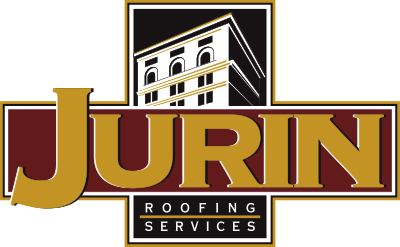When it comes to roof leak diagnosis and repairing your roof, do you get multiple opinions as to the source of your roof leak?
Roof leak diagnosis isn’t always as straight forward as it may appear. Many building owners and managers have experienced the aggravation of an on-going roof leak that cannot seem to be identified.
If your building has a roof leak that is proving difficult to locate, there are several methods for locating hard to find roof leaks. Water testing or non-destructive moisture scans can be used to identify sources of water intrusion locations and trapped moisture.
It is also possible that the roof itself is not the source of the leak. I’ve seen many times where the roof wasn’t the issue and the source of the leak could be related to cladding, glazing, or wall penetrations.
Professional diagnosis is an upfront added expense sure, but what you should consider is the outcome of on-going leaking activity. Roof leaks that are not addressed can lead to mold issues and deck deterioration.
Look at is this way, what expenses are you incurring to have multiple trips by the same crew or company to perform visual inspections and repairs to suspected leak sources? Upset tenants and customers along with further damage to the roof system, substrates, mechanical, electrical, and interior finishes are several issues related to on-going leaks.

3 Important Things to Consider
#1 – Once an emergency temporary roof leak repair is performed, identify why the roof failed at this location.
The most important step in diagnosing a roof leak is identifying the true cause of the leak. There are several reasons the roofs experience roof leaks. Typically we see roofs fail at detail locations as a result of lack of proper maintenance. These items are typically easily identifiable and repaired.
- Was there a design flaw not addressed during the installation of the existing roof assembly resulting in the roof leak?
- Is there ponding water as a result of improper design to allow for positive drainage? Incorporating additional drainage points or slopes to drains may be necessary.
- Is structural movement occurring at wall flashings or at deck changes? Expansion joints may need to be incorporated to avoid continual repairs.

#2 – What is the best course of action for roof leak repair?
There are several items to address when considering the best course of action. Make sure you are asking your roofing contractor the right questions. Get a few opinions and go with what makes the most economical sense.
Here is a list of items that should be considered and evaluated to repair the roof in the most economical manner:
- Is there currently a warranty in place on the roof? Before you do anything identify whether or not your roof is currently covered under warranty. Your roof warranty may cover the repair.
- Is the result of the leak covered under my roof warranty? Contact your roofing manufacturer who issued your warranty and ask if your roof needs to be checked by an authorized applicator. Many roofing manufacturers require that only their authorized applicators can make warranty repairs. Using an unauthorized contractor could put your roof warranty in jeopardy.
- What is the remaining expected useful life of my roof? Your roof life will typically match your warranty length and with preventative maintenance even last past that. However should your roof be past its use life you may want to reconsider having too many expensive repairs completed if replacing the soon roof is inevitable.
- What is the estimated cost to properly repair? Sometimes your roof can be repaired and brought back up to a maintainable level. Preventative maintenance could prove to be less expensive than waiting for issues to occur that may cause more damage in the long run.
- Has the roof leak caused any other damage that should be addressed? Now is the time to ensure that your roof doesn’t have any other issues caused by the roof leak such as wet insulation. If the leak has permeated your insulation it can severely affect your r-value. Consider having the insulation replaced in any areas where it has become saturated by moisture. Leaving wet materials can lead to repair failure and further damage to insulation and decking substrates. Reduction in R-values and increased energy costs are some of the issues with leaving wet materials in-place.
- Is the roof system past its use life and are repairs just a stop-gap at this point before roof replacement? Again it could cost you less in the long run to have the roof replaced if it is past its useful and maintainable life.
If your roof is generally still in good shape, proper permanent repairs are important to get the most out of your investment. If your roof is shot and needs to be replaced, too much money spent on repairs can just become a waste at that point. Make sure your contractor can tell you how many years your roof has left before you start throwing good money after bad.

#3 – Preventative Maintenance
Whether diagnosis results in a simple roof leak repair to the membrane due to lack of maintenance or if the time has come to have a new roof installed, we can’t say this enough…
MAINTENANCE, MAINTENANCE, MAINTENANCE!!!!
It’s possible the issues you are experiencing now could have been prevented through regular roof inspections and maintenance.
The number one cause of premature roof failure is the lack of regular roof maintenance. Roofing industry experts say that a building owner who budgets only 5 cents per square foot per year can avoid losing three times that much per square foot each year. Your roof should be checked at least twice a year.






